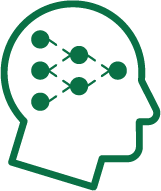Today, the growth of the global economy, declining product life cycles, expanding communications capabilities, and increased competition have required companies to look to supply chain partners to provide not only goods and services but also core functions such as engineering, research and development, manufacturing, information technology, and marketing.As a result, in some companies, strategic sourcing has been separated from the activities of purchase order release and management. The goal of the strategic sourcing process is to locate and manage the suppliers that provide goods and services of strategic significance to the business. Strategic sourcing requires today’s buyer to execute several critical steps long before the first purchase order is generated. The strategic sourcing process begins with the make-or-buy decision. Once this step has been completed, buyers must execute several critical tasks, including determining a supply source; negotiating terms such as price, quality, and delivery; drafting contracts formalizing the conditions accepted by both parties; identifying opportunities for joint development of product specifications; and developing closer partnerships with suppliers. Once completed, the actual purchasing and delivery process can begin. This session will focus on sourcing and other sessions will focus on purchase order management, negotiations and contracts.Sourcing Strategies will examine the sourcing process, including differentiating between sourcing and strategic sourcing.Review the critical questions and learning objectives.

Critical Questions
- What impact does early purchasing and supplier involvement have on new product development?
- What two major factors affect the make-or-buy decision?
- Why has supplier relationship management (SRM) become important?


Learning Objectives
Upon completion, participants will be able to:
- List at least two additional activities in strategic sourcing compared to traditional sourcing.
- Name the five steps in the sourcing process and differentiate what activities in each step is considered strategic sourcing.
- Develop a cost-avoidance analysis.
- Distinguish between different types of supplier relationships.
- Define supplier relationship management (SRM).

Terms
Use the Flashcards and Games to review the terms.
